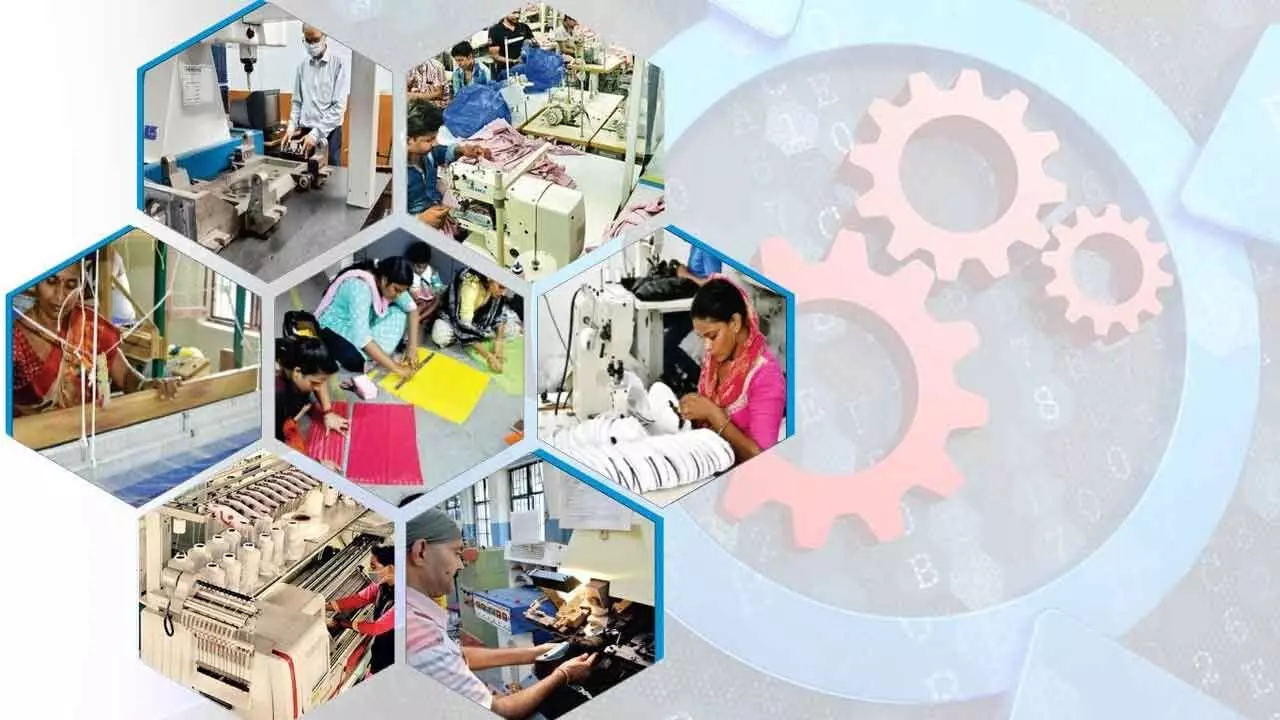Time To Bolster Competitiveness Of Indian MSMEs
NITI Aayog’s ‘Enhancing MSMEs Competitiveness in India’ report presents a blueprint to tap the potential of Indian MSMEs
Time To Bolster Competitiveness Of Indian MSMEs

The report also highlights the pressing issue of skill shortages within the MSME sector
Within the realm of global economics, micro-, small- and medium-sized enterprises (MSMEs) emerge as the cornerstone of prosperity, embodying the largest and most influential segment across all economies (Storey, Pinch, & Mason, 1991). They constitute a vast majority of businesses worldwide and play a pivotal role in job creation and global economic growth. Despite being the largest business segment globally in terms of numbers, participation of SMEs has been less in Global Value chains (GVC) compared to the large enterprises.
GVCs are crucial for engaging with the global market, by way of concentrating on developingspecialised products and specialising in particular segments of the production chain.
Furthermore, GVCs serve as critical facilitators of the international exchange of investment, knowledge and managerial practices that are in line with global standards, thereby significantly bolstering domestic businesses. Gaining access to such globally recognised best practices offers emerging economies unparalleled growth prospects and augmenting export capabilities.
With approximately 63 million MSMEs operating in India, predominantly within sectors at the forefront of Global Value Chain (GVC) exports,
their integration into these chains is important. However, they encounter a multitude of challenges that hinder their ability to enter or advance within a value chain. MSMEs in developing countries frequently find themselves constrained to lower value-added stages of production due to the prohibitive investment and expertise required for more sophisticated operations, risking functional downgrading or being perpetually confined to less profitable niches.
Additionally, while ascending a value chain presents more favourable opportunities for learning and growth, it simultaneously imposes steeper entry barriers. These include stringent quality standards, and the need for speed and adaptability, making it crucial for smaller firms in these nations to align swiftly with the escalating demands.
NITI Aayog has released a report on ‘Enhancing MSMEs Competitiveness in India’, which has prepared in collaboration with the Institute for Competitiveness (IFC).
The report presents a detailed blueprint for unlocking the immense potential of Indian MSMEs through systemic reforms in financing, skilling, innovation, and market access.
The report delves into the key challenges affecting their competitiveness. Using firm-level data and the Periodic Labour Force Survey (PLFS), it provides recommendations to foster sustainable integration and enhance their incorporation into global value chains. It focuses on four important sectors - textiles manufacturing and apparel, chemical products, automotive and food processing while highlighting the sector-specific challenges and opportunities that need to be addressed to unlock the potential of MSMEs in India.
The report examines current national and state policies, highlighting gaps in implementation and limited awareness among MSMEs.
One of the important findings of the report is the notable improvement in MSMEs' access to formal credit. Between 2020 and 2024, the share of micro and small enterprises accessing credit through scheduled banks rose from 14 per cent to 20 per cent, while medium enterprises saw an increase from four to nine per cent.
Despite these improvements, the report reveals that a substantial credit gap remains. Only 19 per cent of MSME credit demand was met formally by FY21, leaving an estimated Rs 80 lakh crore unmet. The Credit Guarantee Fund Trust for Micro and Small Enterprises (CGTMSE) has expanded significantly, but still faces significant limitations. To bridge the credit gap and unlock inclusive, scalable finance for MSMEs, the report calls for a revamped CGTMSE, supported by institutional collaboration and more targeted services.

